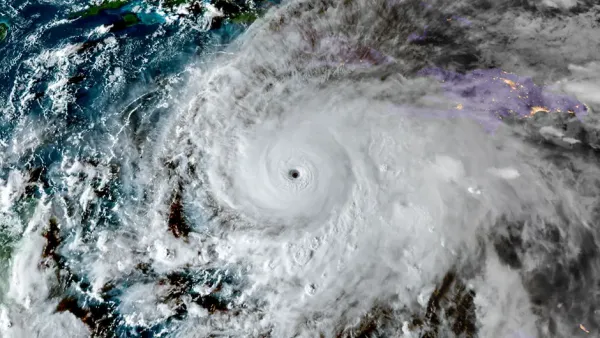
BYLINE: Robert C. Jones, Jr.
Newswise — Once more into a raging tempest Jun Zhang has flown.
The six hours he spent flying within the violent winds and blinding rain of Hurricane Melissa this past weekend added to the multitude of operational and scientific flights he’s taken into some of the most powerful storms of the past decade.
One hundred five—110, perhaps. Zhang, a tropical cyclone scientist at the Cooperative Institute for Marine and Atmospheric Studies (CIMAS), is not quite sure just how many of the Hurricane Hunter flights he’s taken. Only that it’s well over 100.
In his role at CIMAS, a National Oceanic and Atmospheric Administration (NOAA) center based at the University of Miami Rosenstiel School of Marine, Atmospheric, and Earth Science, Zhang’s become accustomed to the grueling schedule.
“But Hurricane Melissa is surely one of the most important missions,” he said Friday, shortly before making the four-hour drive from Miami to Lakeland Linder International Airport, where he was set to board a P-3 Orion aircraft that flew into the heart of the rapidly intensifying storm.
Now at Category 5 strength on Monday, Melissa, which had remained nearly stationary in the Caribbean for days but is now on the move, will likely thrash parts of Jamaica, eastern Cuba, and southern Hispaniola with life-threatening flash flooding and landslides.
Zhang, who is serving as an emergency technology principal investigator aboard flights into the storm, has deployed and monitored a suite of drones that record wind, temperature, and pressure changes, augmenting data gathered by the P-3’s other sophisticated instruments.
“It’s definitely been a busy stretch with our flights into Melissa,” said Jason Dunion, a meteorologist at CIMAS and with NOAA’s Hurricane Research Division. “We’ve been launching the Black Swift S0 drones from our P-3 flights, and they’ve been very successful deployments with some flying as long as two to three hours in the storm.”
The drones, noted Zhang, have a decided advantage over onboard equipment, flying at altitudes unsafe for Kermit and Miss Piggy, the two P-3s that are part of NOAA’s fleet of planes.
“The drones can fly at incredibly low altitudes—that boundary layer in hurricanes down to about 200 meters above the surface of the ocean where heat and moisture provide the energy that powers storms,” Zhang said. “And it’s that critical boundary layer we need to learn more about as it is involved in the rapid intensification of storms.”
During an unusual Atlantic hurricane season that so far has seen no U.S. landfalls, Zhang and other scientists have also flown into Erin, Gabrielle, and Imelda, not only gathering data sent to National Hurricane Center forecasters but also deploying drones as part of tropical cyclone research.
“Whenever possible, we always tack on research to our operational missions,” said Dunion, noting that teams of scientists have flown on a series of dedicated research missions into storms to test new technology that will analyze how storms intensify.
During flights into Erin, for example, Zhang helped employ a new strategy for drone data collection, flying the unmanned aircraft against the storm’s violent winds and at different altitudes, which could allow for more accurate readings of sustained winds.
“It was incredibly successful,” he said of the new technique.
For Zhang, who earned a master’s degree and Ph.D. in applied marine physics from the Rosenstiel School, slicing through the eyewall of a cyclone during a Hurricane Hunter flight helps fulfill a nearly lifetime goal of wanting to study severe weather and its impacts.
“Hurricanes involve complicated multiscale processes that I’m keenly interested in understanding,” he said. “The scientific community needs to know more about hurricane intensity changes and the structure of storms so that we can more accurately forecast hurricanes to help reduce losses and save lives.”
News@theU
https%3A%2F%2Fwww.newswise.com%2Farticles%2Fflying-into-the-heart-of-melissa%2F%3Fsc%3Drsla
The post Flying Into the Heart of Melissa appeared first on CliQ INDIA.
Contact to : xlf550402@gmail.com
Copyright © boyuanhulian 2020 - 2023. All Right Reserved.